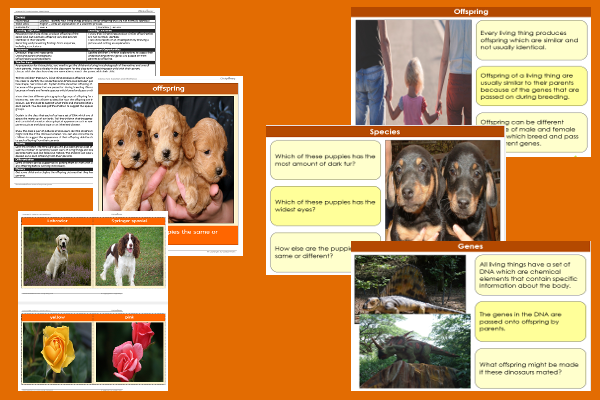Lesson Four – Genes

This science teaching pack for Key Stage Two gets the children to identify and record how living things can produce similar offspring that are not normally identical to each other during the reproduction processes.
The class can record illustrations and write explanations about how different types of offspring from a range of living things can be the same or different than their parents.
Download this teaching pack including a lesson plan, classroom activities and an interactive presentation to identify and record how living things can produce similar offspring that are not normally identical to each other during the reproduction processes
Activities in this teaching pack include display posters to identify and describe some of groups of offspring for different species of animals and a set of cards to identify and describe the offspring of different parents for a range of living things when recording illustrations and explanations.
The interactive presentation can be used to explore and record how living things can produce similar offspring that are not normally identical to each other during the reproduction process.
This lesson is part of a science scheme of work to get the children to explore how living things adapt and evolve over time as a result of competition for natural resources and transfer inherited traits to their offspring. There are teaching activities for shared learning, differentiated worksheets to support independent learning and interactive presentations to introduce concepts and key skills.
-

Determinant Lists
Explain and model how to make lists of objects used and found in different locations to match the correct determinants of a and an
-

English SPAG Assessment
Assess abilities in composing sentences for fiction and non-fiction using the correct spellings, punctuation marks and grammar vocabulary phrases
-

Maths Arithmetic Assessment
Assess abilities in solving arithmetic number problems for addition, subtraction, multiplication and division when working with informal and formal written calculations
-

Environment
Identify and describe some of the special landscapes and locations that can be found in the world and reflect on how they can be protected and preserved for the future
